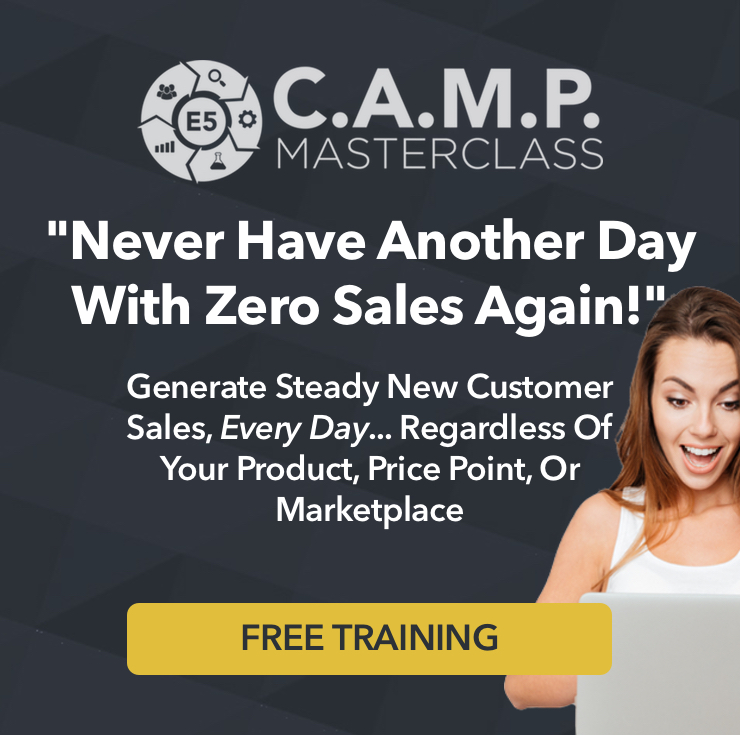The most common mistake marketers make – which leads to your prospect not understanding, and then leaving your page – is confusing the difference between features and benefits.
Remember that “a confused mind does not buy”, and if your prospect doesn’t understand what’s in it for them, then you are both missing out.
Features are facts.
Features are such things as the guarantee, the delivery method, and the physical characteristics. They let your prospect know what to expect in terms of product size and shape, time of calls, or bonus details.
Features are important for you, as the designer of the product or service, so you have an outline that makes sense as you create it. And listing features somewhere on your sales page – usually lower on the page – is useful so that people aren’t left wondering what they are going to get and how it will arrive.
But features alone simply aren’t going to be enough for your prospect to recognize that your product or service is actually a solution to their problem. You must explain the benefits. You must explain…
“What’s in it for me?”
In it’s simplest form, you can describe a benefit as the result that someone receives after using your product or service. This is the short answer to the question, “What’s in it for me?”
Sometimes people confuse the two because a feature can sound like a benefit.
For instance, saying that a plane has a lot of legroom may sound like a benefit, but it isn’t. The benefit of having more legroom is what it does for you. Because it gives you more space, leaving you feeling less cramped, you can sleep better (these are advantages, kind of in-between features and benefits). Because you were able to get some sleep, you arrive at your destination in a good mood, feeling fresh and ready to give a great presentation to your prospect. THAT is a key benefit of having more legroom.
The problem with selling by “feature dumping” – focusing on features as the key buying invitation – is that it doesn’t help your prospect connect to your product or service on an emotional level, and without the emotion, he is much less likely to invest.
We know that people usually buy based on emotion, and then rationalize their purchase with their thinking brain.
Buying with the brain in mind
We buy because we want something (greed), or we fear something. All of our emotions are, in some way, based on either moving away from pain, or toward pleasure.
Because our brains can’t deal very well with incongruity – that is, saying one thing and doing another – we bring our thoughts and actions into alignment.
If the marketer has presented an emotionally compelling reason to invest in that product, and it helps us either move away from pain or toward pleasure, we buy it. Then we explain WHY we bought it to ourselves, often using the features as the explanation.
Start by turning features into benefits.
In your own mind, state one of the features of your product. Then finish the sentence, “What this means to you is…”
In our example above, you can see how we turned extra legroom on the airplane into a benefit: feeling rested and sharp, in order to give a great presentation.
You see, people may think they care about the features. They will even ask about them: “What color is it?” “How many modules are there?” “What are the specs?”
But features are all about your PRODUCT. Benefits, on the other hand, are all about your PROSPECT. In fact, even more than that, benefits are really about the RESULT that your prospect is really seeking.
So this brings us to an extremely important question.
What result does your prospect want?
Do you really know?
It’s a longer post for another time, but if you haven’t talked to enough people in your market, you may be making an offer that no one wants. So you must know – I mean, really know and understand – what your prospect’s biggest concerns, complaints, confusions, fears, and challenges are.
Only when you live, eat, and breathe these problems can you provide a solution that will solve them. And when you solve a core problem for your typical customer, they will come knocking down your door, practically begging to give you their money to keep solving their problems. If your solution(s) can take away their pain, then you both win.
So the key buying invitation must be based on several things:
- knowing exactly what your prospect’s primary challenges and issues are
- knowing exactly what result your prospect wants to have: either moving away from pain and fear, or toward pleasure and gain
- being able to clarify – in words – the desired emotions that will solidify the result your prospect wants
- having a rock-solid solution that will help them solve those challenges and issues
- being able to connect those results and emotions to the features that you know your product or service can offer.
In the comments below, please share your prospect’s biggest challenge, the ULTIMATE result that they are looking for, and the emotions that clarify this result. Once you get this sorted out, the rest will flow!
Do you want more help on this VERY SAME TOPIC? Do you want to double your sales conversions?? Then grab our PSEBM Ultimate Sales Conversion Secret – a 4-hour bootcamp training with Todd; check it out for FREE!



